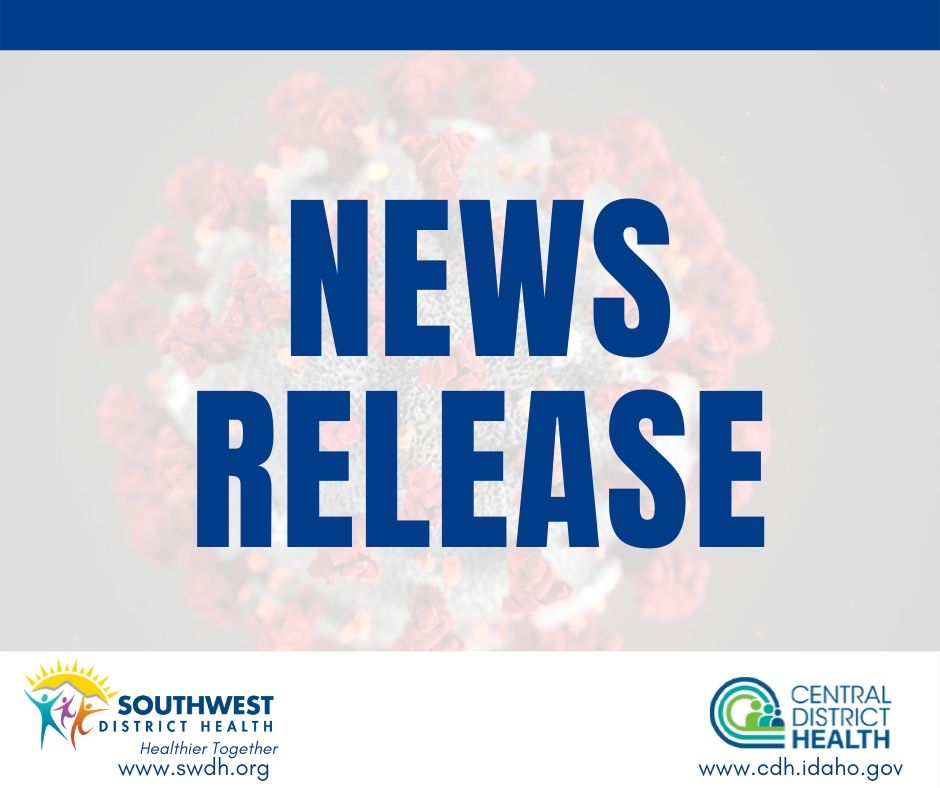Community COVID-19 transmission identified in Treasure Valley

FOR IMMEDIATE RELEASE
Community COVID-19 transmission identified in Treasure Valley
Ada and Canyon County residents urged to follow actionable outlined steps
Central District Health (CDH) has seen an increase in confirmed COVID-19 cases in Ada County, and as of March 24, 2020, confirms one case of community spread in Ada County. One additional case in Ada County is pending investigation. To-date, CDH has seen 25 cases between Ada and Valley Counties.
Central District Health numbers to-date:
(CDH serves Ada, Boise, Elmore, and Valley Counties)
- Travel-associated confirmed cases = 23 (22 in Ada, 1 in Valley)
- Community-transmission cases = 1 (Ada)
- Pending investigation results = 1 (Ada)
While Southwest District Health (SWDH) has not yet confirmed community transmission, CDH and SWDH recognize there is considerable overlap between residents of Ada and Canyon Counties.
Southwest District Health numbers to-date:
(SWDH serves Adams, Washington, Payette, Gem, Canyon, Owyhee Counties)
- Travel-associated confirmed cases = 4 (Canyon)
- Community-transmission cases = 0 known/confirmed
- Pending investigation results = 3 (2 in Canyon, 1 in Payette)
Community transmission is defined as illness within a community that lacks connection to travel or other confirmed cases.
CDH and SWDH are closely monitoring COVID-19 cases in their jurisdictions and anticipate continued spread of this illness throughout Idaho and our counties. Both local health districts urge their communities to follow outlined strategies to help slow the spread of COVID-19 and avoid overwhelming our health care system while protecting our most vulnerable populations.
What should people do to help reduce community transmission?
Public health recommends the following:
- Practice social distancing: avoid crowds, maintain at least 6 feet from others when possible
- Decrease time in group settings when possible
- Limit unnecessary travel
- Consider postponing or canceling out of town vacations and travel out of state
- Use drive through and delivery services for everyday errands where possible
- Persons at increased risk of severe illness should consider sheltering in place
- Only leave your home for “essential activities,” to work for an “essential business,” or for “essential travel.” Do not host or attend any gatherings
- Persons with recent travel to an area having widespread community transmission or a shelter in place order should shelter in place at home until 14 days after return.
- Create a plan for how to safely care for a household member if they become ill
While today’s community risk is still relatively low, this is rapidly changing. We ask that the public keep informed on developments and information from their health departments, which can be found at: https://www.cdh.idaho.gov/dac-coronavirus and https://swdh.id.gov/coronavirus/
If you are experiencing signs and symptoms associated with respiratory illness and do not need medical care, you should follow steps for self-isolation. If signs and symptoms worsen, please seek health care.
CDH and SWDH encourage everyone to seek out credible information for this response on the following websites:
- Central District Health: https://www.cdh.idaho.gov/dac-coronavirus
- Southwest District Health: https://swdh.id.gov/coronavirus/
- State of Idaho: www.coronavirus.idaho.gov
- CDC: https://www.cdc.gov/coronavirus/2019-ncov/index.html
###
Media Contacts:
Central District Health (CDH)
Christine Myron 208.327.8639 or 208.871.1712 | cmyron@cdh.idaho.gov
Southwest District Health
Katrina Williams 208.455.5317 or 208.899.1268 | Katrina.Williams@phd3.idaho.gov